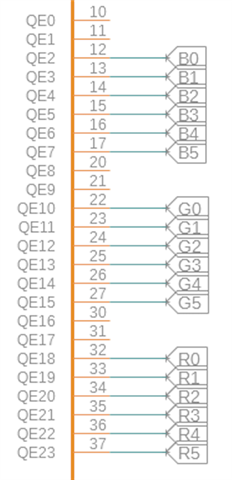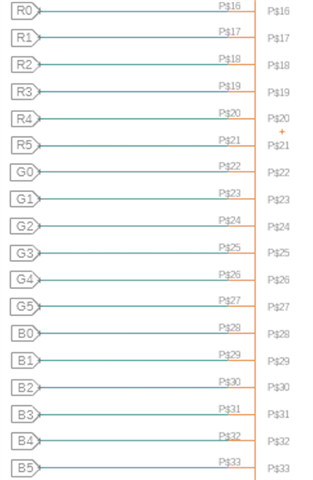Other Parts Discussed in Thread: TFP401
Tool/software:
Dear, Support Team.
We are currently using the TFP401APZP chip for a 480x480 resolution, 18-bit color depth display.
We are encountering an unusual issue where a distinct line appears along the horizontal boundaries of color values.
This line disappears along the vertical axis.
Notably, this is not a case of color banding.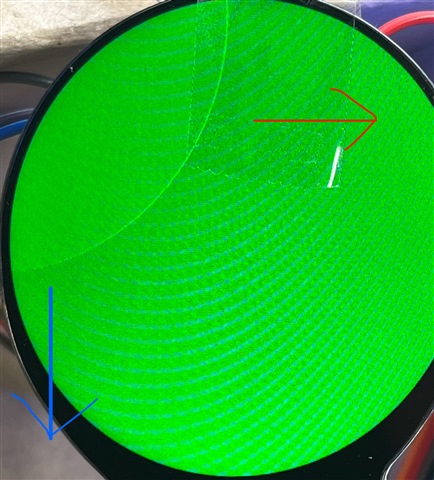
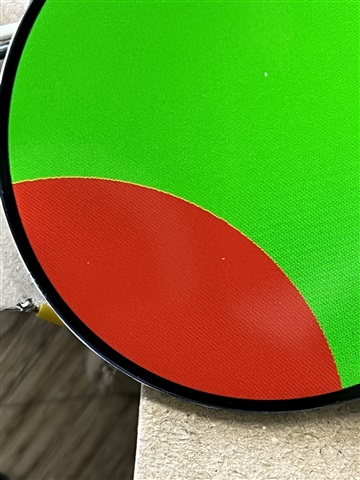
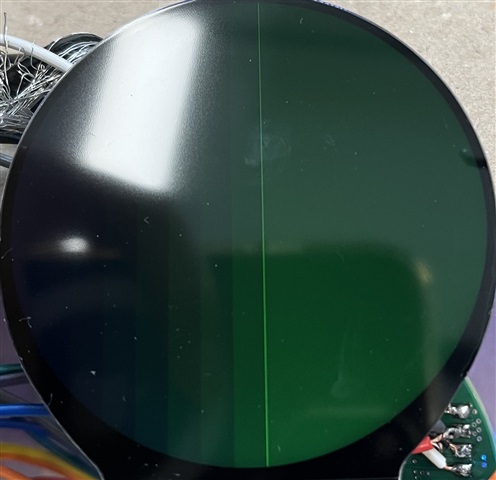
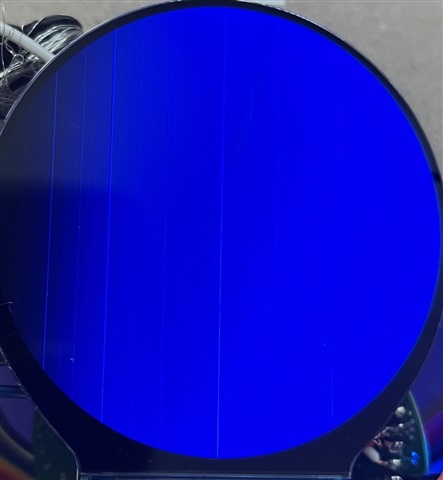
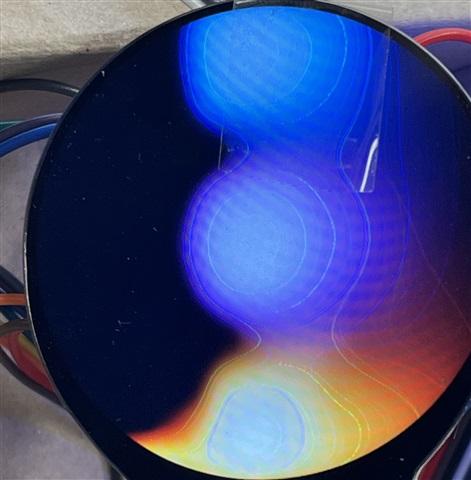
The below shader is used to generate a green gradient image above, where the minimum color width is expected to be 32 pixels.
However, the issue presents with a 1-pixel line that appears contrary to this expectation.
// GLSL
void main()
{
vec2 coord = gl_FragCoord.xy;
ivec3 ic = ivec3(0, int(coord.x) / 32, 0);
if (ic.y > 7)
{
ic.y = 8;
}
fragColor = vec4(vec3(ic) / 255.0, 1.0);
}Configuration:
Raspberry Pi 4 HDMI -> TFP401 -> (Drop 2LSB) -> Display driver(ST7701SN)
Below is Display Timing info used for HDMI.
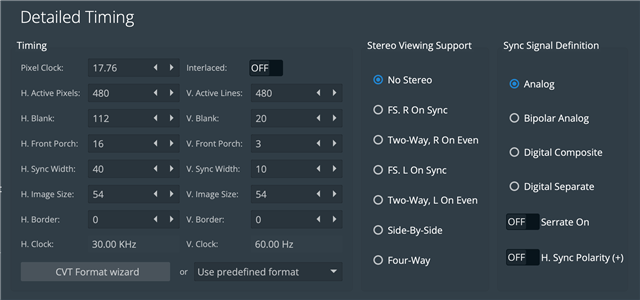
The display works correctly when directly interfaced with an ESP32 using an 18-bit RGB configuration.
We have reviewed our hardware setup and found no apparent issues
We welcome any advice or suggestions you might have.
Best regards,
Gunwoo Ahn


